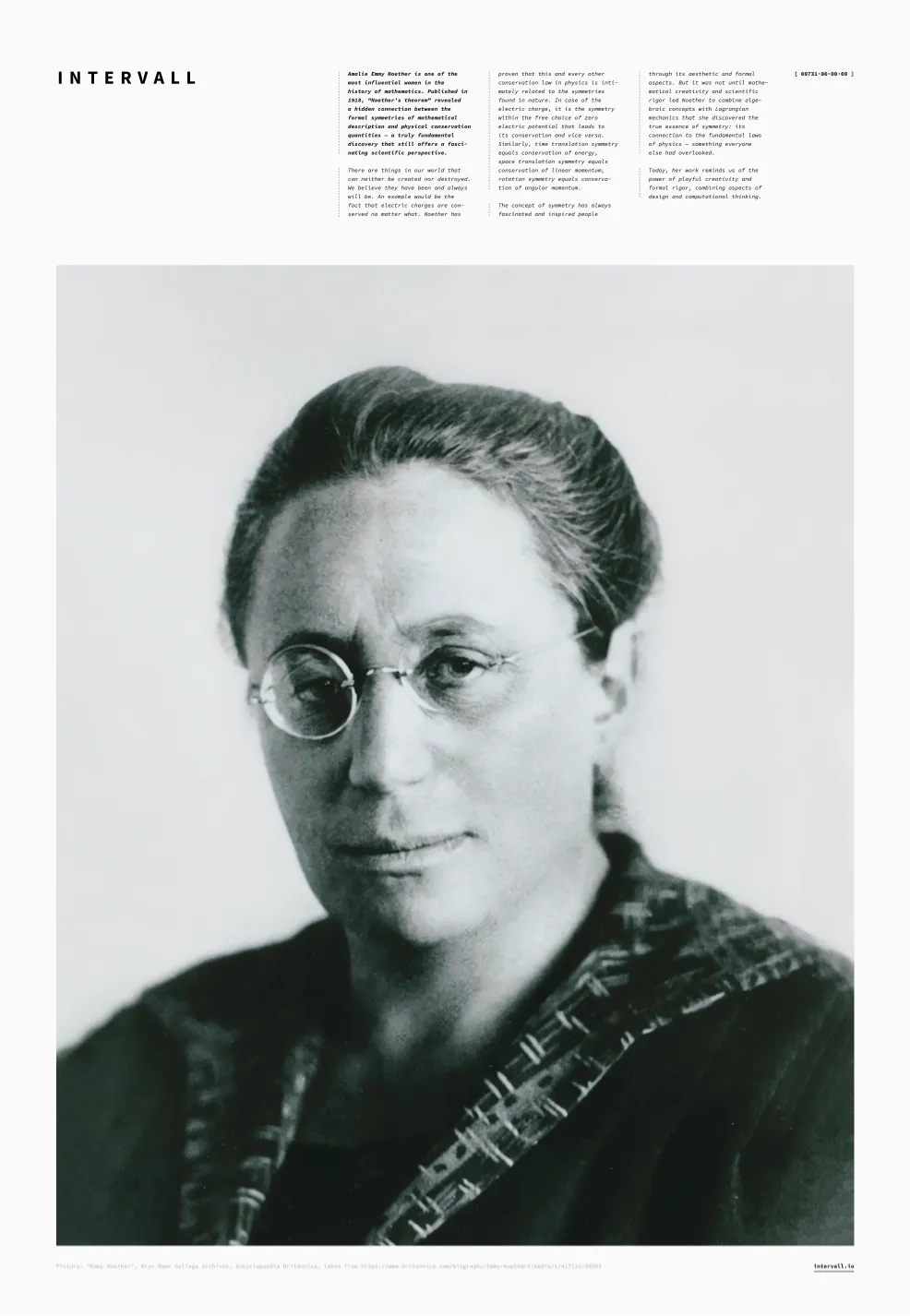[ 0, 731 ]
Amalie Emmy Noether is one of the most influential women in the history of mathematics. Published in 1918, “Noether’s theorem” revealed a hidden connection between the formal symmetries of mathematical description and physical conservation quantities — a truly fundamental discovery that still offers a fascinating scientific perspective.
There are things in our world that can neither be created nor destroyed. We believe they have been and always will be. An example would be the fact that electric charges are conserved no matter what. Noether has proven that this and every other conservation law in physics is intimately related to the symmetries found in nature. In case of the electric charge, it is the symmetry within the free choice of zero electric potential that leads to its conservation and vice versa. Similarly, time translation symmetry equals conservation of energy, space translation symmetry equals conservation of linear momentum, rotation symmetry equals conservation of angular momentum.
The concept of symmetry has always fascinated and inspired people through its aesthetic and formal aspects. But it was not until mathematical creativity and scientific rigor led Noether to combine algebraic concepts with Lagrangian mechanics that she discovered the true essence of symmetry: its connection to the fundamental laws of physics — something everyone else had overlooked.
Today, her work reminds us of the power of playful creativity and formal rigor, combining aspects of design and computational thinking.
